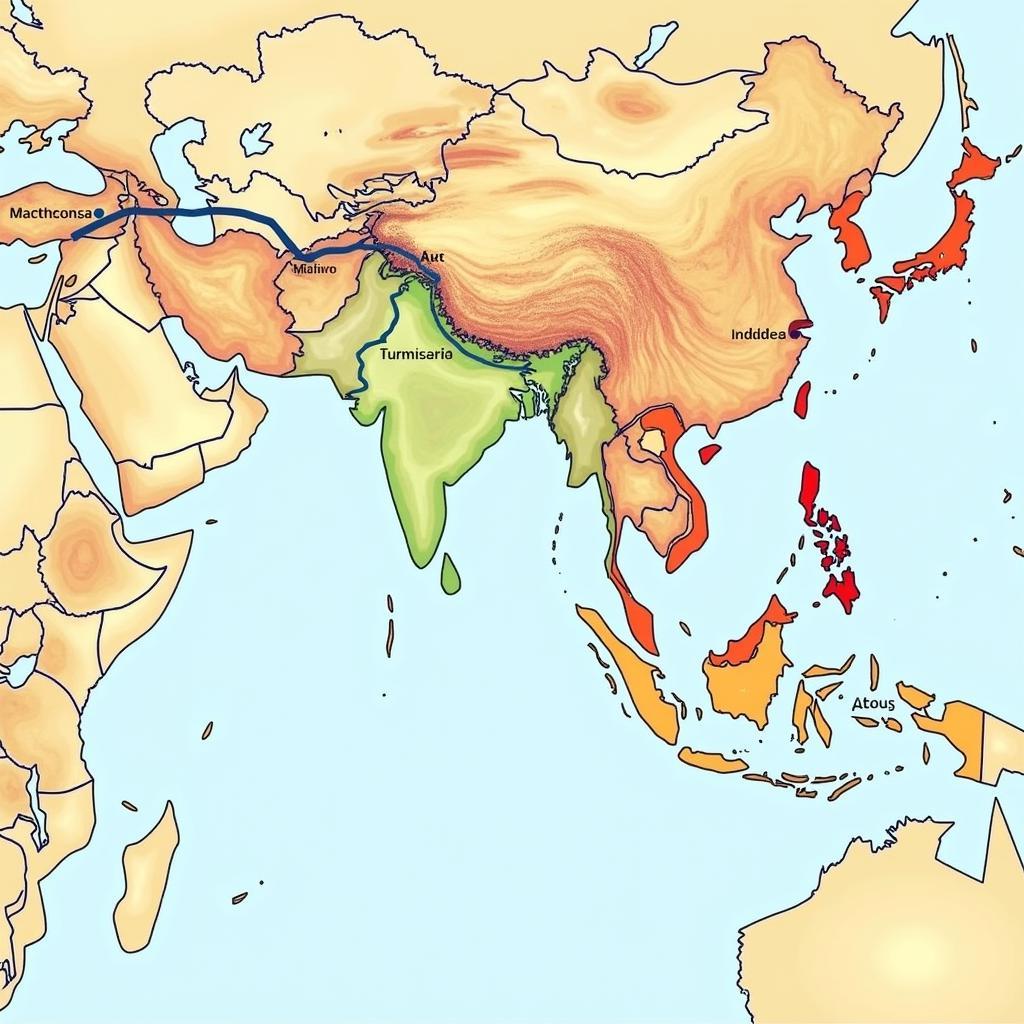The world associates vibrant colors with Southeast Asia. From the intricate patterns of batik fabrics in Malaysia to the saffron robes of Buddhist monks in Thailand, dyes are integral to the region’s cultural identity. What many don’t realize is the significant role South Asia has played in shaping this colorful landscape. The historical trade of dyestuff between ASEAN and South Asia reveals a story of cultural exchange, economic partnership, and artistic inspiration.
A Journey Through Time: Ancient Routes and Natural Wonders
For centuries, traders traversed land and sea, carrying precious cargo between the Indian subcontinent and Southeast Asia. Among these treasures were natural dyes, derived from plants, insects, and minerals.
- Indigo: This deep blue dye, extracted from the indigo plant, was a prized commodity. South Asia, particularly India, was a major producer, and its indigo found its way into textiles across Southeast Asia. The iconic blue and white batik of Indonesia, for instance, often featured indigo dyes from afar.
- Madder: This root, originating in the Middle East and cultivated in South Asia, yielded a range of red hues. From vibrant crimson to earthy terracotta, madder-dyed fabrics adorned both royalty and commoners in Southeast Asia.
- Turmeric: This spice, a staple in South Asian cuisine, also served as a vibrant yellow dye. Its sunny disposition brightened fabrics and rituals throughout Southeast Asia. Think of the saffron robes worn by Buddhist monks – the color often came from turmeric.
 Ancient Trade Routes of Dyestuff
Ancient Trade Routes of Dyestuff
These are just a few examples of the natural wonders that crossed borders, painting a vibrant tapestry of cultural exchange.
More Than Just Color: The Cultural Significance of Dyestuff
The trade in dyestuff went beyond mere economics; it fostered deep cultural connections. The colors themselves carried profound meaning.
- Royal Purple: In both South Asia and Southeast Asia, certain dyes, like those derived from rare sea snails, were reserved for royalty. The color purple, often associated with power and divinity, became a symbol of elite status.
- Ritualistic Hues: Many dyes held religious and spiritual importance. The use of turmeric in Buddhist robes reflects its association with purity and enlightenment. Similarly, the red of madder often featured in ceremonial garments in Southeast Asia, signifying auspicious occasions.
The shared appreciation for these colors and their symbolism strengthened the bonds between the two regions.
From Ancient Trade to Modern Inspiration: The Legacy Continues
While synthetic dyes have become more prevalent today, the legacy of natural dyestuff from South Asia continues to inspire artisans and designers across ASEAN.
- Sustainable Fashion: There’s a growing movement towards eco-friendly and ethical fashion. Designers in Southeast Asia are rediscovering traditional dyeing techniques using natural ingredients, drawing inspiration from ancient recipes and practices.
- Contemporary Interpretations: Modern artists and textile designers are incorporating natural dyes from South Asia in innovative ways. They are experimenting with new techniques, creating unique patterns, and blending traditional aesthetics with a contemporary sensibility.
The exchange of dyestuff between ASEAN and South Asia is a testament to the enduring power of cultural exchange. It’s a story that transcends time, reminding us of the beauty of shared heritage and the potential for future collaborations.
FAQ:
1. What is the most significant dyestuff traded between ASEAN and South Asia?
Indigo, with its deep blue hue, holds a significant place in the history of trade between the two regions.
2. Are natural dyes still used in Southeast Asia today?
Yes, natural dyes are experiencing a revival, particularly in the realm of sustainable and ethical fashion.
3. How have South Asian dyes influenced Southeast Asian art?
Beyond textiles, dyes from South Asia have influenced paintings, sculptures, and even culinary traditions in Southeast Asia.
Need More Information?
Contact us at Phone Number: 0369020373, Email: [email protected] or visit us at Thôn Ngọc Liễn, Hiệp Hòa, Bắc Giang, Việt Nam. Our customer service team is available 24/7 to assist you.


